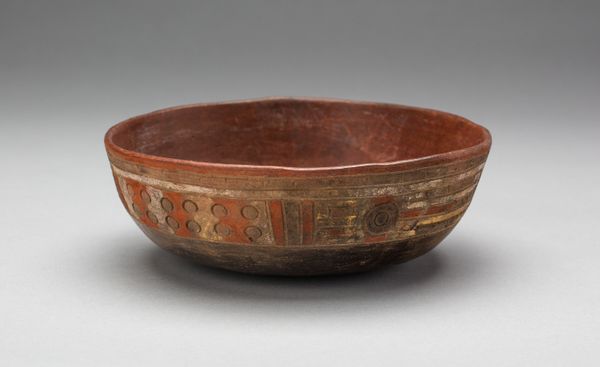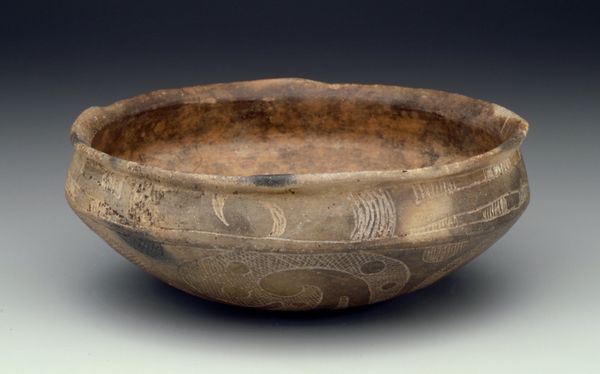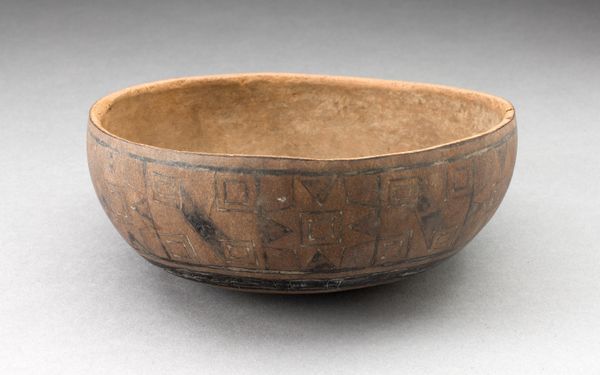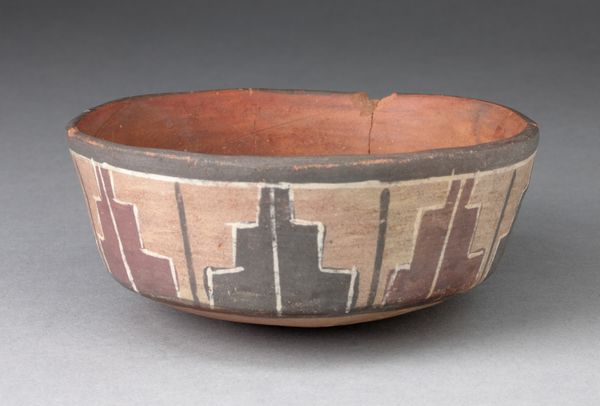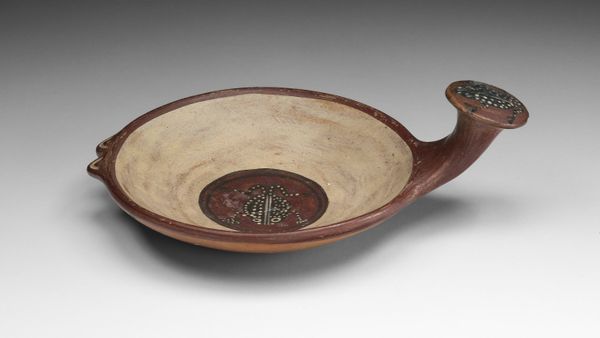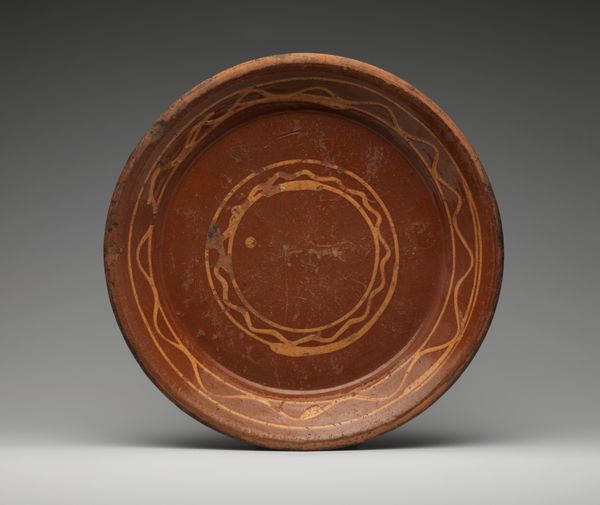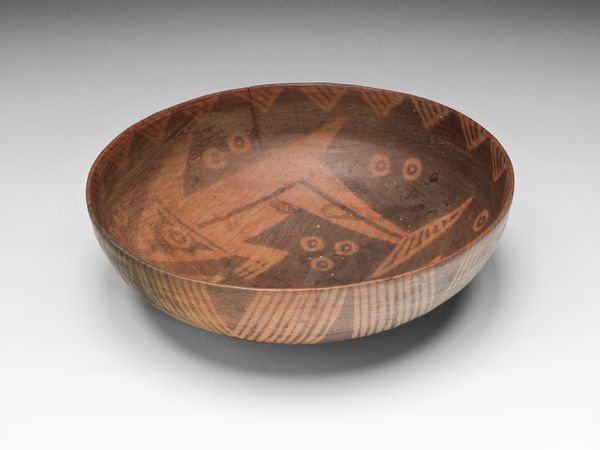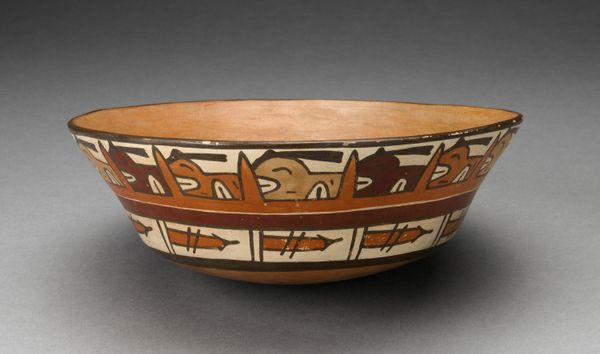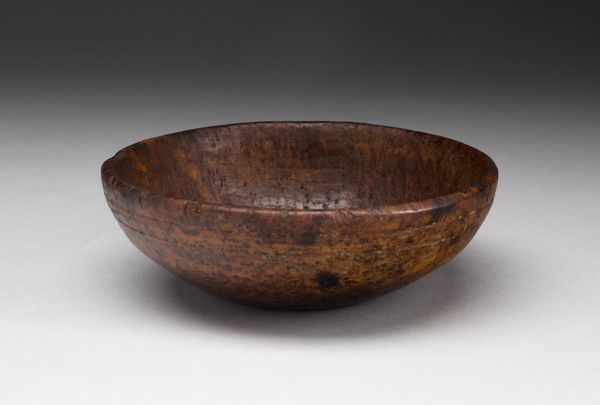
ceramic, earthenware
#
pottery
#
ceramic
#
earthenware
#
geometric
#
ceramic
#
indigenous-americas
Dimensions: 3.5 × 18.1 cm (1 3/8 × 7 1/8 in.)
Copyright: Public Domain
Editor: Here we have a striking Miniature Tray with Geometric Pattern, thought to be crafted between 1450 and 1532 by the Inca people. It's ceramic—earthenware to be exact—and I'm immediately drawn to the way the geometric patterns contrast with the dark, mottled interior. What can you tell me about this piece? Curator: For me, it begins with the materials themselves: the locally sourced clay, the pigments. Consider the labor involved in extracting, processing, and shaping these materials. This isn't just an aesthetic object, but a testament to the Incan resourcefulness and production practices. The geometric patterns too speak to something. Editor: I see the geometric design as decorative but is it something more? Curator: Perhaps. It could signal access to specific materials or specialized skills within the Incan social structure. Who controlled access to the kilns? Who mixed the paints? Who dictated the designs? Looking at this, I wonder about its function: Was it purely ornamental or part of ritual practice? The scale hints it was intended for serving something. The clay, the paint, the form itself—everything reflects specific processes and constraints. The geometric forms likely held significance far beyond mere decoration; reflecting cosmic or societal order as perceived and enacted through the labour invested in it's creation. What does the materiality communicate to you about the Incan worldview? Editor: That’s fascinating, thinking about the materials and the means of production gives me a whole new perspective on the purpose and meaning behind this seemingly simple tray. Curator: Indeed. By examining the material conditions of its creation, we gain a far richer understanding of Incan artistry and their relationship with the natural world.
Comments
No comments
Be the first to comment and join the conversation on the ultimate creative platform.

